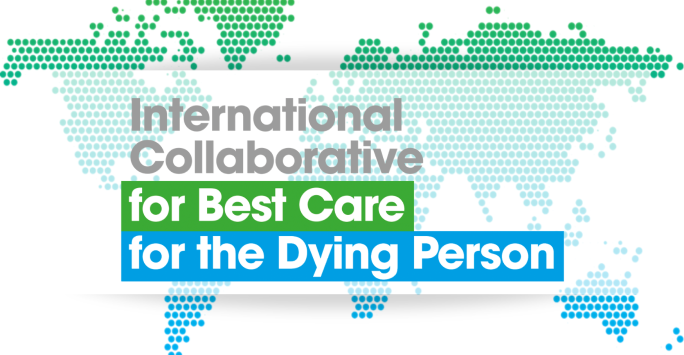
ILCaM's Professor John Ellershaw, specialist in Palliative Care, is Chairman of the International Collaborative for Best Care for the Dying Person. Ten years ago, the group developed the 10/40 model to guide and improve the treatment of those undergoing end of life care.
The Collaborative recently met to perform a Delphi Study and discuss its findings. The aim of this study was to update the 10 Core Principles and 40 Core Outcomes in the 10/40 Model for Best Care for the Dying Person.
The 10/40 Model for Best Care for the Dying Person, was first developed in 2013 by the International Collaborative, and is a model of care based on internationally agreed, standardised outcomes to promote high-quality, consistent care for dying people. The Model has evolved repeatedly since its creation, with modifications and amendments made in response to developments within the evidence base.
The Collaborative are committed to the belief that Equitable access to high-quality end-of-life care, no matter disease, diagnosis or place of care, should be available to all. Despite knowing what a good death should look like – free from pain, in the place of your choice, cared for with dignity and supported by the best possible care – equitable access is still a goal, rather than a guarantee.
Three rounds of the Delphi Study were conducted, with 160 respondents from across 31 countries taking part in the first round.
Results supported minor amendments to 7 items related to:
- Recognition of the dying phase
- Ongoing assessment of the patient’s condition
- Communication with patients about the plan of care
- Care in the immediate time after the death of a patient, and the addition of a sub core outcome for care provided after death.
John Ellershaw, of the Palliative Care Unit at the Institute of Life Course and Medical Sciences said of the model, “The 10/40 Model has been developed from international expertise in the clinical setting of best practice of care for the dying patient, this has now been consolidated and refined with the results of this Delphi study.
I am delighted that this publication provides a research evidence base to underpin clinical practice and enables further dissemination of the 10/40 model internationally, to improve care of the dying on a global basis.”
We spoke to PhD student, Tamsin McGlinchey to gain more insight into the 10/40 model, her involvement, and the ambition of the Collaborative going forward:
What triggered the initial construction of the 10/40 model?
The international Collaborative for Best Care for the Dying Person (the Collaborative) was formed in 2013 by a group of international researchers and clinicians, following participation in an international European Union funded study, OPCARE9. United by a common goal to ensure all people experience a good death wherever they happen to die, the Collaborative developed the 10/40 Model for best care for the dying, drawing on international evidence from OPCARE9, wider national and international evidence, and consensus opinion.
The 10/40 Model provides a framework based on internationally agreed standardised outcomes of care that care organisations can use to design clinical documents, or care plans, promoting the delivery of consistent, equitable, and individualised care for every patient.
Who makes up the Collaboration?
The Delphi project was conducted as part of the work of the International Collaborative for Best Care for the Dying Patient, and was led by the following research teams:
Professor John Ellershaw led the team in the UK, from the Palliative Care Unit at the Institute of Life Course and Medical Sciences at the University of Liverpool.
Professor Carl Johan Fürst led the team in Sweden, from the Institute for Palliative Care at Lund University.
Professor Lia van Zuylen led the team in the Netherlands, from the Cancer Centre Amsterdam at the Amsterdam University Medical Centres.
Do you have any examples of real-world applications of the model?
The 10/40 model has been adopted and adapted across a range of different care providing organisations across eleven countries linked through the Collaborative. In some of these countries, the content of the 10/40 model has been used to inform national guidance in palliative and end of life care. For example, government health departments in Norway and Sweden recommend the use of clinical care plans that have been derived from the 10/40 model – the Norwegian ‘Last Days of Life’ care plan, and the ‘Swedish Palliative Care Guide’.
There have also been examples where clinical documents created using outcomes from the 10/40 model have been used to support screening and data collection for large clinical studies. For example, the SILENCE study in the Netherlands demonstrates how outcomes from the 10/40 model can benefit comparative studies.
Why is it important to update the model regularly?
The 10/40 Model for Best Care for the Dying Person’ was first published a decade ago. During this time there have been huge advances in the organisation and delivery of palliative and end of life care across the world. Therefore, it was time for an update to ensure that the content of the model remains relevant and applicable for palliative care practice. As clinical evidence and consensus opinions are continually advancing, ensuing that there is a proves for regular review and update of the 10/40 model is important. The 10/40 model is embedded as a programme of research within the International Collaborative for Best Care for the Dying Patient.
Future work on the 10/40 Model will encourage greater involvement from patient and public groups, and lower income and culturally diverse countries, as participation in the Delphi study was relatively low for these groups.
If you would like any further information on the 10/40 Model visit the website at https://www.bestcareforthedying.org/